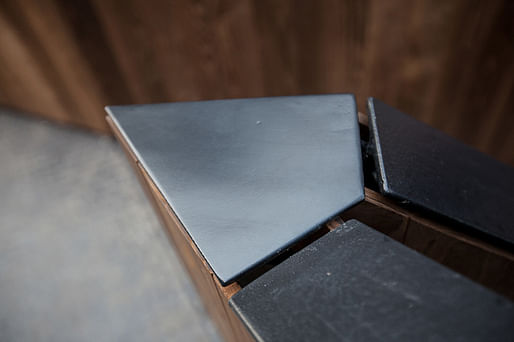
Built in the 14th century on the Jutland peninsula in Denmark, the Kalø Castle ruins is one of the country's most iconic landmarks and tourist hotspots. But the medieval tower was largely inaccessible to the public, and lacked any internal structure for centuries. That all changed with a crafty intervention by Copenhagen-based MAP Architects and Mast-Studio, who successfully designed a zig-zagging staircase inside the monument.
Commissioned by the Danish Ministry of the Environment, the architects completed the project in 2016. The 38 m2 staircase lets visitors enter and climb through the tower, which is 3 stories high and 2 stories deep. People can walk further up the stairs to access facade openings and balconies, where they can take in views of the surrounding landscape.





“The desire to allow the visitor to ‘touch’ the archaeological layers of the tower, and simultaneously ‘leave’ the ruin and ‘levitate’ in the landscape was pivotal,” MAP Architects writes. “The building site was extremely challenging since the whole area is a cultural heritage and strictly protected, therefore, no damage to the tower was allowed and the process was closely monitored.“
They 3D-scanned every single brick of the tower in designing the staircase, which uses a steel-frame construction and is supported by the tower at only four points to minimize damage. The sides and underside are clad in ash wood that was specially treated with heat to maximize durability for up to 60 years without paint, according to the designers.


Find more project images in the gallery below.
All images courtesy of MAP Architects. h/t Inhabitat
*Note: This article was amended to credit Mast-Studio.
No Comments
Block this user
Are you sure you want to block this user and hide all related comments throughout the site?
Archinect
This is your first comment on Archinect. Your comment will be visible once approved.